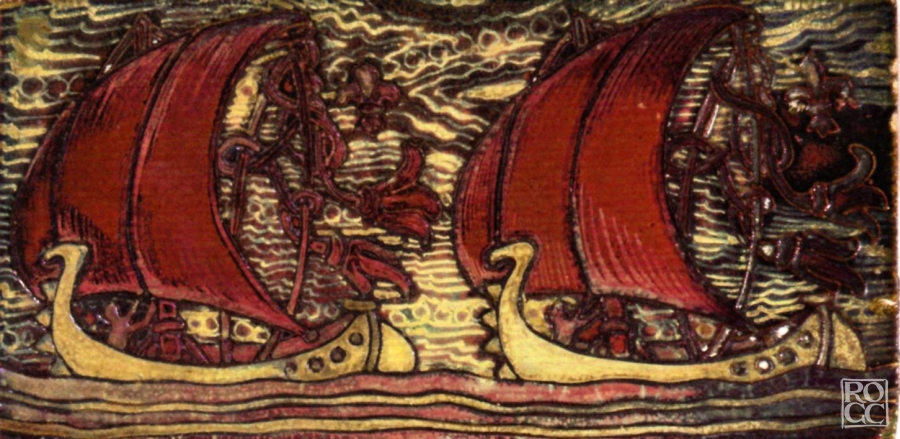The Art of Ceramics

…A movement of rebellion, wounded self-love…
The year is 1896 and this was Galileo Chini’s reaction to the news of the sale of the historic Ginori factory, renowned Tuscan company since 1735, to Richard in Milan. In his memoirs Chini recalls having reunited with his fellow artist friends at the Caffè Nacci in Piazza Beccaria and the sense of revolt among them when they learned of the sale.
The group decided: if Doccia was no longer Florentine, they themselves would plant a new seed, founding their own new manufacturing company. And so it was, with certainty and faith in their own capabilities, the ardor of youth and the same ideals as before they founded a new Manifattura.
The first enterprise
L’ Arte della Ceramica ( The Art of Ceramics) was thus born in 1896, with Galileo Chini as Artistic Director, Vittorio Giunti as Tecnical Director, Giovanni Montelatici and Giovanni Vannuzzi executors. Chini designed the most suitable motifs to be painted on the precious surfaces of vases and panels, suggesting the colors and collaborating on their realization; the products were a result of the latest European artistic tendencies, with decoration inspired by the Pre Raphaellite and Art Nouveau movements, reinterpreted and reflecting his Tuscan sensitivity.
The production of the factory was immediately successful, receiving special recognition at every event where it was presented, in Italy and abroad. Private and public collections soon sought acquisition of their precious ceramics, even Zarina Alexandra of Russia chose some pieces for her personal collection. After a few years of great success, relations among the associates deteriorated and Galileo Chini and his cousin Tito, who had meanwhile become Tecnical Director, abandoned the business.
The Art of Ceramics
In 1906, still together, they founded another factory in Borgo San Lorenzo, a few kilometres from Florence, called Fornaci San Lorenzo; this company continued as well with a cutting-edge production, using Galileo’s artistic culture and Chino’s skills, as technician and experimenter of new procedures.
Alongside they began to produce glass and stained glass of the highest artistic level. Just as for the Art of Ceramics their success was immediate: suffice to say that in New York Tiffany was their agent, and in Alessandria of Egypt they had a store that represented them. The factory also produced high quality decorative ceramics for architecture; the greatest commissions were the Terme Tamerici in Montecatini (1910), for various villas and townhouses in Viareggio, Montecatini and Borgo San Lorenzo, and above all for the elaborate decoration of the Terme Berzieri Spa in Salsomaggiore, inaugurated in 1923. To meet the production demands for this last commission, it was necessary to build new kilns and increase the number of workers. The result was worth every effort, upon completion the newspapers at the time called it the most beautiful spa in the world.
In the following years the Fornaci San Lorenzo factory continued to produce both artistic works and architectural decoration, participating with great success in 1925 at the Paris Exposition, which consecrated the Decò movement.
After 1925 Galileo Chini renounced his artistic direction of the factory due to internal contrasts and while still collaborating he gradually detached from it altogether. Tito Chini, son of Chino, became director, and he later passed the position to his brother Augusto. The 1930’s brought a change in aesthetic taste, causing a decline in the production of architectural elements. WW2 arrived and in December of 1943 a terrible bombing practically destroyed the factory.
Despite the adversities the factory reopened in association with the Pecchioli company.
Today the business continues its activity in the sign of Chinian creativity thanks to a new Belgian partner, under the artistic direction of Augusto’s son Vieri Chini, together with his sons Matteo and Cosimo.